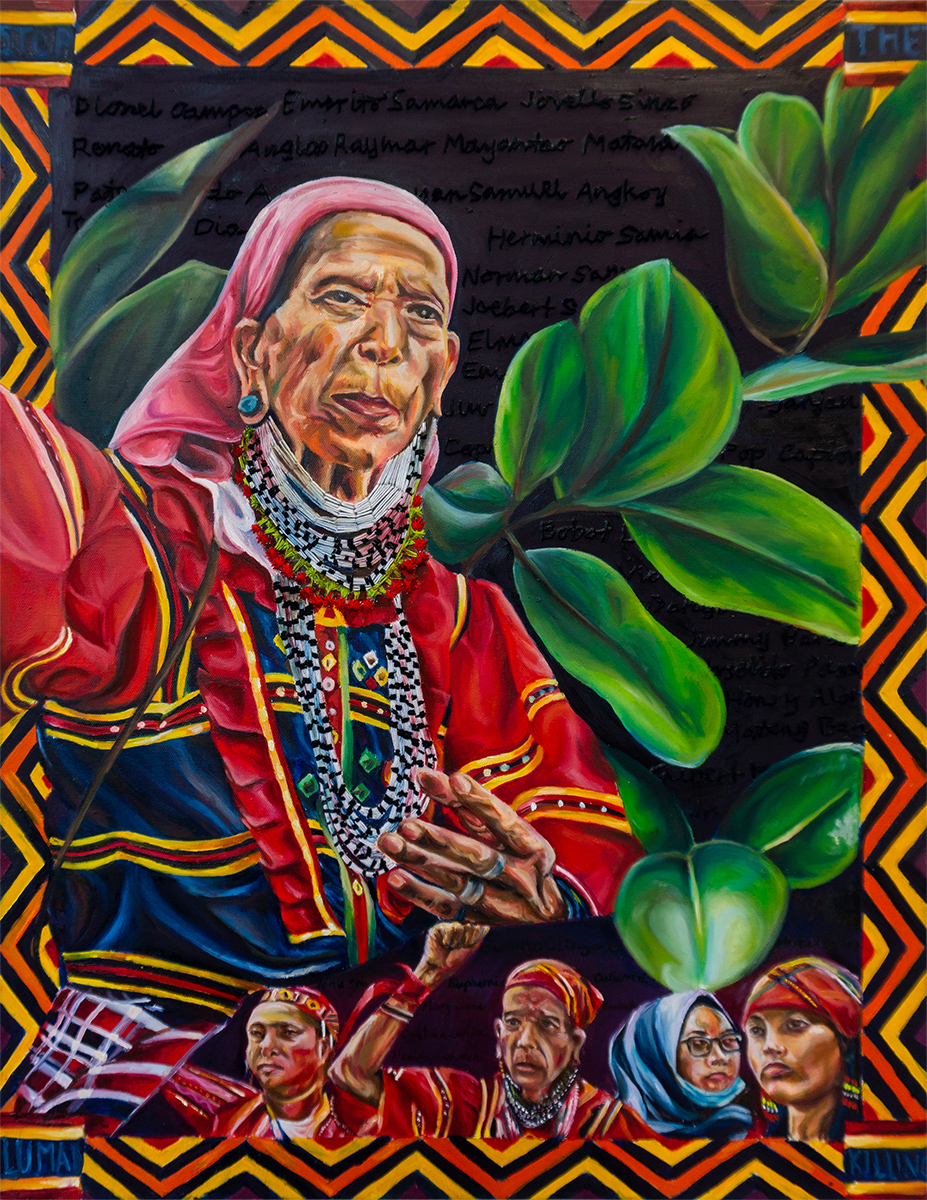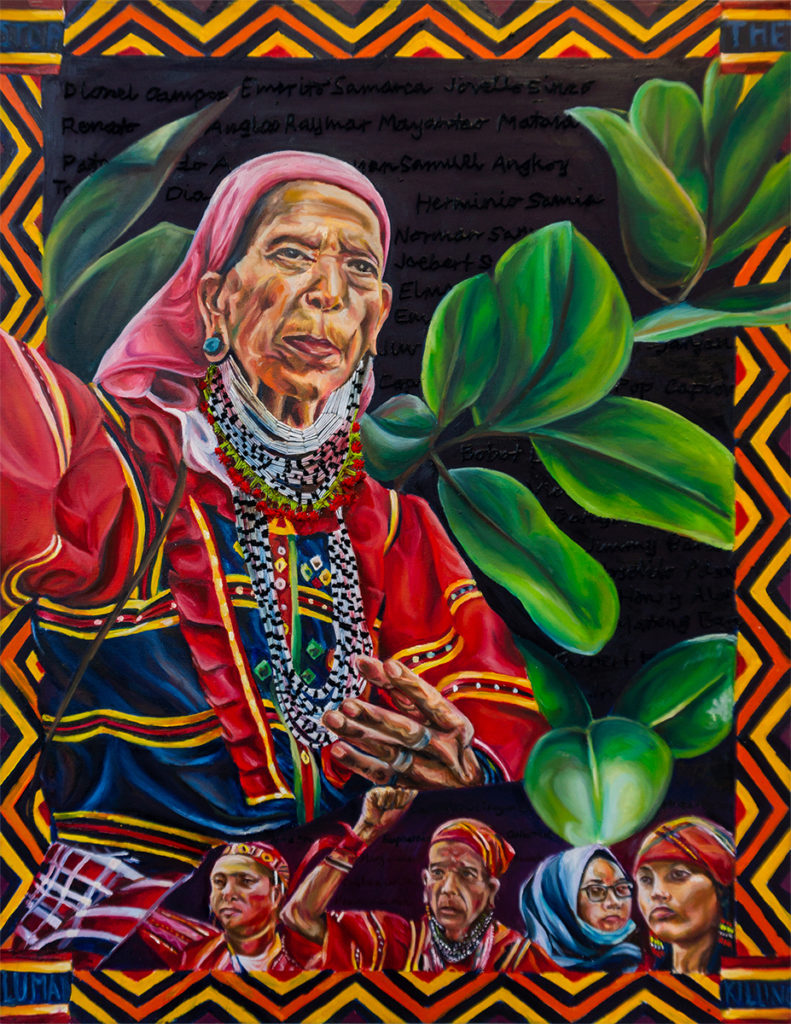
Our Land, Our Tribe, Our Lives

by Jessa Mae Mendiola
Our Land, Our Tribe, Our Lives, 28 x 22 inches, oil and embroidery on canvas
About the Artist
Jessa Mae Mendiola was born in the island of Leyte in the Philippines. At the age of seven, she immigrated to the United States with her family. As she moved to America at a young age , she did not have the opportunity to discover her Filipino heritage, history, and culture. Thus, she is reconnecting with her birth country by creating artworks that involve socio-political issues, Filipino-American identity, immigration, cultural practices, and colonialism. Jessa Mae Mendiola works with a variety of mediums such as paintings, drawings, sculpture, and installations.
Artist Statement
Through my works, I bring awareness and a voice to marginalized groups – such as indigenous people, farmers, and the poor. I explore their stories, struggles, and the hostile socio-political forces that they face. These include people known by the umbrella name of ‘Lumad’, i.e. indigenous groups who are neither Christian nor Muslim, but who belong rather to earlier, native Filipino belief systems. Such people are victims of frequent killings, false imprisonment, etc., by both official and extra-judicial forces. I create memorials or tributes to these oppressed people by utilizing the names of those who have died or were wronged by such hostile forces. For example, I produce kites that function as memorials to the students, teachers, directors, etc., who were targets of repeated violence against Lumad grade schools. Although they benefit from such alternative schools, they are negatively affected by wars between the New People’s Army (NPA) and the Armed Forces of the Philippines (AFP). They are further harmed by unscrupulous oil, mining, and logging companies that steal the natural resources found on indigenous land. The government and war rhetoric often twist or complicate their stories to the point of confusion. Thus, I utilize mat weaving, often times a traditional woman craft, and combine it with painting, embroidery, and fabric to show the different narratives and distortions around each socio-political issue. I create hybrid patterns by adding my own spin on designs found on mats, textiles, baskets, and jewelry associated with the tribes or location where the problem occurred. Mat weaving is also a form of traditional cultural practice that is passed throughout the generations. Continued decline in its practice places the culture and even people’s livelihood at risk. Since weaving practices unite the people through tradition and reflects the weaver’s history, culture, identity, and beliefs, I use weaving to show that these issues are integrated and affect not only Filipino life but also Filipino national identity. Their voices, their experiences, their stories need to be portrayed and heard not only among themselves but also among the Filipinos and international citizens who are not aware of the history of abuse that Filipinos face.
View her work at: Jessa Mae Mendiola
You must be logged in to post a comment.

+ There are no comments
Add yours